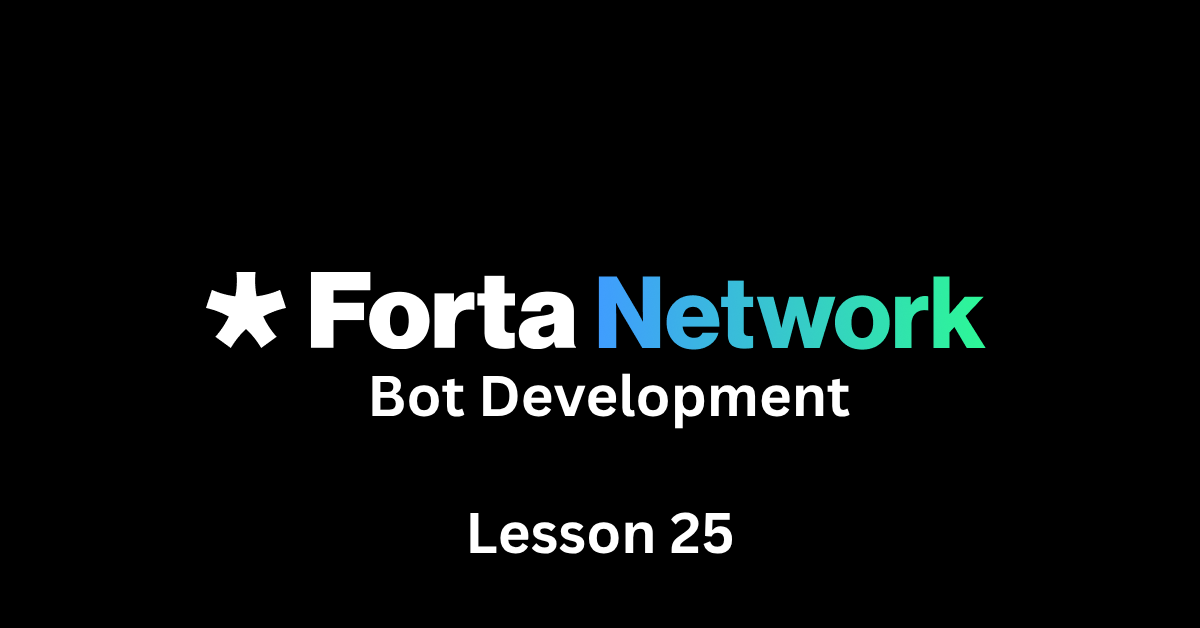Lesson 25: Advanced Bot Testing (Simulations, Edge Cases & Fuzzing)
In this lesson, you will learn how to rigorously test your Forta agents, ensuring they perform reliably under real-world conditions. For that we will go deeper into simulation, edge case testing, and fuzzing, which are all essential tools to make your bot a resilient guardian on-chain.
Understanding Bot testing easier
Imagine training a guard dog.
You don’t just show it one burglar.
You test it with disguises, distractions, and weird edge cases.
Well, same for your detection bots.
You must simulate not just the “happy path,” but also attackers trying to break through unseen places.
Why Advanced Testing is important
Forta bots must:
Detect real issues without triggering false alarms
Safely process incomplete or invalid input.
Avoid false positives in strange conditions
Survive updates, reorgs, edge chains, and MEV chaos
Robust testing makes sure your bot can manage unexpected scenarios smoothly.
Types of Advanced Tests
Simulating Real Transactions
Use Forta’s CLI to replay actual Ethereum data into your bot.
npx forta-agent simulate \
--tx 0x5fbb4592... \
--agent-path ./src \
--json
Why It Helps:
Reproduces real on-chain behavior
Lets you test alerts for known exploits
Ideal for verifying that existing features still work after changes
Designing Edge Cases
Think like an attacker and ask yourself:
What if value is
0?What if
from === to?What if a contract emits no logs but performs internal changes?
What if gas used is just below the threshold?
Example:
handleTransaction(tx) {
if (tx.value === "0") {
findings.push(
Finding.fromObject({
name: "Zero Value Tx",
description: "Might be suspicious dusting behavior",
alertId: "ZERO-TX",
severity: Severity.Low,
type: FindingType.Suspicious,
metadata: { txHash: tx.hash }
})
);
}
}
Create unit tests for every edge you can think of.
Fuzz Testing (Randomized Inputs)
Use tools to generate large volumes of random, malformed, or boundary-pushing inputs.
While Forta CLI doesn’t yet support full fuzzing, you can:
Write scripts that generate 1,000+ fake txs
Randomize sender, receiver, value, gas, etc.
Pass the alerts into your handler functions
Helpful npm libraries:
fakerchancefast-check
Fuzz testing can expose failures, inefficiencies, or noisy alert behavior
Testing Structure Example
Here's a simple project structure for strong testing:
/src
agent.js
/test
agent.test.js
edge-cases.test.js
simulations/
tx-replay-1.json
tx-replay-2.json
/fuzz
generate-fake-txs.js
Include scripts to run all test suites before deployment.
Gas Consumption
Don't forget to measure how expensive your logic is.
npx forta-agent simulate \
--tx 0xabc... \
--measure-performance
If you’re iterating over too many logs or parsing complex ABI structures then refactor.
Key Concepts Recap
Simulation involves replaying real txs to test expected behavior
Edge Case testing means feeding weird, rare, malformed inputs
Fuzzing involves applying brute force testing with randomized inputs
Advanced testing protects your bot from false positives, false negatives, and crashes
Use CLI tools and custom scripts to automate test coverage
Next lesson, we will explore building multi-chain monitoring strategies, because DeFi threats don’t stay on one chain.
🙏 Until next meditation,
The Blockchain Security Monk



